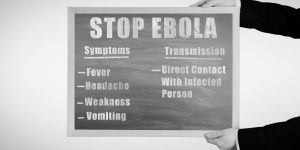What Happened On June 27th?
On June 27, 1976, in the quiet township of Nzara, Sudan, a factory storekeeper fell ill, unknowingly becoming the first victim of what would soon be known as one of the deadliest viruses in human history: Ebola.
Viral Dawn & The First Infections
Nzara, a small town known for its cotton factory, bustled with routine activity that morning. The storekeeper went about his usual tasks, but by afternoon, he suffered from severe symptoms that puzzled local health workers. High fever, severe headache, and muscle pain quickly escalated to vomiting, diarrhea, and bleeding.
The Virus Spreads
The disease spread rapidly. Within days, several factory workers and their families exhibited similar symptoms. Nzara’s modest healthcare facilities quickly became overwhelmed. Doctors initially mistook the illness for malaria or typhoid fever, common in the region.
In neighboring towns, panic spread as news of the deadly illness reached them. Families began isolating their sick loved ones to stop the contagion. Medical professionals, ill-equipped to handle such a virulent outbreak, struggled to provide care while protecting themselves.
Hunting The Invisible Enemy
As more people fell ill, the World Health Organization (WHO) and the Centers for Disease Control and Prevention (CDC) sent teams to Nzara. These experts, including renowned epidemiologist Dr. Karl Johnson, sought to identify and contain the disease. They quickly realized they faced something unprecedented.

Through careful investigation, they identified the virus’s mode of transmission: contact with bodily fluids of infected individuals. The factory’s close-knit environment allowed the virus to spread rapidly. Further investigations led to the discovery of the virus’s source: bats, which frequently came into contact with the local population.
Interestingly, the Ebola virus could survive on surfaces in a liquid or dried state for several days, making it highly infectious. This property added to the challenge of containing the outbreak.
Naming The Enemy… Ebola
In October 1976, the disease struck again in Yambuku, Zaire (now the Democratic Republic of the Congo). The virus, named after the Ebola River near the outbreak site, had claimed hundreds of lives by then. Researchers discovered that the viruses in Nzara and Yambuku were closely related, indicating the first recognized outbreak of Ebola virus disease.
Dr. Johnson later recalled, “First two weeks in Zaire we did not know how virus got from person to person. Most of doctors dead. That was scary.”
The initial outbreaks in Nzara and Yambuku occurred simultaneously but independently, suggesting that the virus had multiple points of origin in a short period. This simultaneous emergence showed its potential for widespread transmission.
A Viral Killer
The Nzara outbreak, though overshadowed by the larger Yambuku epidemic, actually strengthened our understanding which helped to combat Ebola. It demonstrated the need for rapid response and international cooperation in managing infectious diseases. The 1976 Ebola outbreak set the stage for future research, leading to better diagnostic tools, treatments, and preventive measures.
In subsequent years, Ebola re-emerged in several deadly outbreaks, but the lessons learned from Nzara and Yambuku remained invaluable. They underscored the importance of early detection, effective quarantine measures, and public education in controlling the spread of such a lethal virus.

The Nzara outbreak echoed the global impact of earlier pandemics such as the Spanish Flu of 1918, which infected a third of the world’s population and resulted in millions of deaths. Similarly, the fight against smallpox, eradicated by 1980 through a global vaccination campaign, demonstrated the importance of international collaboration and rapid response.
Human Toll Of the Outbreak
The Nzara outbreak devastated the local community. In total, 284 people contracted the virus, and 151 of them died, including entire families. One survivor, who lost several family members to the virus, later recounted, “You feel like… maybe.. a ghost.”
Healthcare workers, many of whom succumbed to the virus, were hailed as heroes. Approximately 11 healthcare workers died while treating patients, highlighting their dedication and sacrifice in the face of an unknown and terrifying disease.
The psychological toll on survivors and healthcare workers was immense. Witnessing severe illness and death, coupled with the fear of contracting the virus, left lasting emotional scars on many individuals.
What To Expect In The Future
The events in Nzara on June 27, 1976, and the subsequent Ebola outbreak changed the approach to virology and epidemic response. They reminded the world of the ever-present threat of emerging infectious diseases and the importance of vigilance, preparedness, and international cooperation in public health.
As Dr. Johnson aptly put it, “Ebola taught us that we live in a world where a single event in a remote village can have global consequences. It is a lesson we must never forget.”
The outbreak in Nzara showed the need for strong global health systems capable of responding to such threats swiftly and effectively. The international response to the Ebola outbreak also emphasized the importance of rapid action and the sharing of information to prevent widespread pandemics.





